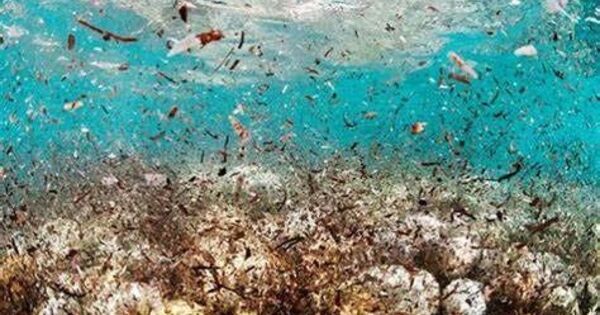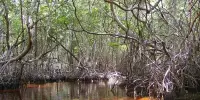Microplastic particles can be detected even in the world’s most remote ocean locations. Pollution levels in Antarctica exceed prior estimates.
The researchers from the University of Basel and the Alfred-Wegener Institute (AWI) have done previous studies on microplastics in Antarctica. However, results from an excursion in the spring of 2021 reveal that environmental contamination from these microscopic plastic particles is a larger concern in the isolated Weddell Sea than previously thought.
The total of 17 seawater samples revealed higher quantities of microplastics than prior research. “The reason for this is the type of sampling we conducted,” explains Clara Leistenschneider, a PhD candidate in the Department of Environmental Sciences at the University of Basel and the study’s primary author.
Research on the topic has dramatically increased awareness in recent years of the problems that microplastics cause for the environment and all living organisms.
Clara Leistenschneider
The current study focuses on particles measuring 11 to 500 micrometers in size. The researchers gathered them by pouring water into tanks, purifying it, and studying it with infrared spectroscopy. Previous research in the region have mostly gathered microplastic particles from the ocean using fine nets with a mesh size of roughly 300 micrometers. Smaller particles would easily flow through the plankton nets.
The results of the new study indicate that 98.3 percent of the plastic particles present in the water were smaller than 300 micrometers, meaning that they were not collected in previous samples. “Pollution in the Antarctic Ocean goes far beyond what was reported in past studies,” Leistenschneider notes. The study appears in the journal Science of the Total Environment.

What role do ocean currents play?
Each sample was polluted to a different amount. The offshore samples taken north of the continental slope and in the Antarctic Slope Current contained the highest quantities of microplastics. The causes behind this are not clear. It’s possible that the ice that forms near the coast keeps the microscopic plastic particles, and they’re only released back into the sea when it melts. Ocean currents may also have an impact. “They might work like a barrier, reducing water exchange between the north and south,” says Gunnar Gerdts of the AWI in Heligoland, Germany.
What is certainly true is that ocean currents are an important factor and the subject of many open questions in the field. So far the researchers have only examined water samples from the ocean surface, but not from lower depths. This is primarily due to limited time on the ship expeditions for taking samples and to equipment with insufficient pumping capacity. “It would nonetheless be revealing to analyze such data, since the deep currents differ greatly from the surface currents and thermohaline circulation leads to exchange with water masses from northern regions,” Leistenschneider says.
It is also unclear how microplastics get into the Weddell Sea in the first place, let alone if they ever exit. The strong Antarctic Circumpolar Current, which runs all the way around the Antarctic Ocean at a latitude of around 60° south, may block their departure. The researchers are also unable to determine where the microplastics originated. Regional ship traffic from the tourism, fishing, and research industries, as well as land-based research stations, could all be potential sources. Microplastics may also make their way to Antarctica via ocean currents or air transfer.
Research leads to awareness
Clara Leistenschneider plans to focus next on analyzing the sediment samples she collected during the same expedition. This should provide information about how microplastics are accumulating on the sea floor, which is home to unique and sensitive organisms and is a breeding ground for Antarctic icefish (Bovichtidae).
With increased tourism in the Antarctic Ocean, pollution may rise even higher in the future, affecting the environment and the food chain.
Nonetheless, Leistenschneider is cautiously optimistic: “Research on the topic has dramatically increased awareness in recent years of the problems that microplastics cause for the environment and all living organisms.” Although there is no all-encompassing answer, she points out that a wide range of stakeholders around the world are working hard to understand the problem better and develop new solutions to prevent plastic pollution. And, as we all know, “every individual who engages in environmentally-conscious behavior can bring about positive change.”
















